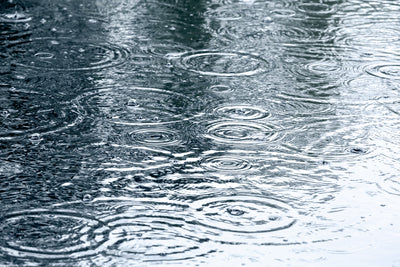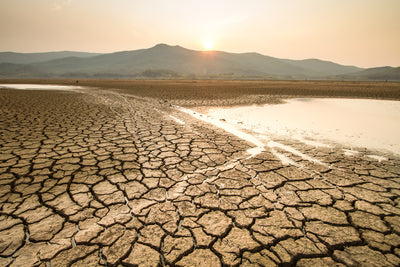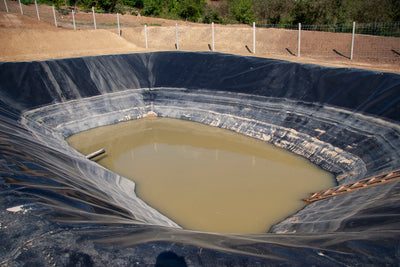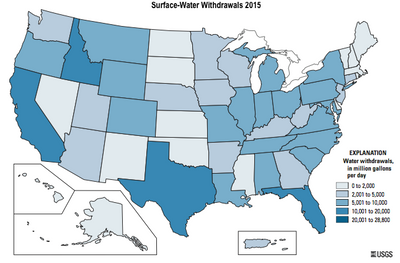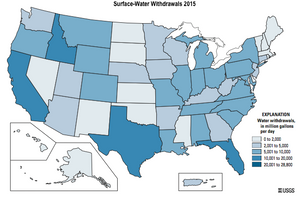Analies Dyjak, M.A. | Head of Policy & Perspectives
A report released in July 2021 revealed that the Environmental Protection Agency (EPA) approved the use of PFAS chemicals for fracking, back in 2011. PFAS are a category of cancer-causing chemicals that were used in consumer products like Scotchgard, non-stick pans, water repelling clothing, and commercial products like fire fighting foam and Teflon. Certain PFAS chemicals are no longer being produced, or have been phased out because of their known impacts on human health. However, many other types of PFAS chemicals are still being used, and their widespread environmental damages are just beginning to be understood. These recent findings call into question why EPA approved harmful chemicals for an industry that is already a well known groundwater polluter.
How Does Fracking Pollute Water?
Hydraulic Fracturing or ‘fracking’ is a type of oil shale and natural gas extraction, where a mixture of water, chemicals, and sand are injected into the ground to push out trapped oil and gas. Each free-standing fracking rig can stretch 4 miles horizontally in each direction. Fluid leaks, wastewater mismanagement, and well construction can contaminate surrounding groundwater and soil. The process of hydraulic fracturing also uses a huge amount of water, which is less than ideal during a nationwide drought. Anywhere from 1.5 million to 16 million gallons of water are used to frack one free-standing well.
Fracking Liquids Are Toxic, Carcinogenic, and Protected By Proprietary Claims
There are quite literally thousands of different chemicals that are used during the hydraulic fracturing process, and each has a different job to assist with oil and gas extraction. For example, acids help to dissolve minerals and other impediments to make the oil and gas flow faster through the ground. Corrosion inhibitors make sure that steel isn’t being damaged by other potentially corrosive fracking liquids. EPA identified 1,084 different fracking chemicals between 2005 and 2013 - many of which were protected under proprietary claims.
Why Are PFAS Both Problematic and Effective?
When EPA approved the use of PFAS for fracking in 2011, scientists had already flagged their concerns years prior. EPA scientists responded to a consent order and ultimately advised the agency for more studies before authorizing their use for fracking. According to the New York Times, these studies were never completed and the administration gave companies the green light. So, what makes PFAS different from benzene, methanol and formaldehyde, and other toxic chemicals used by the fracking industry? There are two reasons why PFAS are so problematic: first, they persist in the environment for decades and can travel through water and soil without breaking down. Second, scientists already knew how dangerous these chemicals were before EPA approved their use in fracking. We know this because of the report based on a recent Freedom of Information Act request, and because companies started phasing out PFAS in 2002, 9 years before they were used in fracking.
Fracking companies were desperate to use PFAS because of their effectiveness. PFAS are extremely hydrophobic, and help separate oil and gas from other properties used during the extraction process. This was such an attractive cost-saving measure that it was too good to pass up.
Fracking is One of The Least Regulated Industries in the U.S.
The fracking industry is exempt from all sorts of reporting and disclosure requirements. In 2005, Vice President Dick Cheney called on Congress to ensure that the fracking industry would be safe from potential future regulations. Ironically, Vice President Cheney was the CEO of Halliburton - one of the largest fracking companies in U.S. - directly before taking office. Congress ultimately passed the Energy Policy Act in 2005, which prevented fracking liquids from being regulated under the Safe Drinking Water Act. In the regulatory world, we like to call this the Halliburton Loophole.
Pollution From Fracking is More Widespread Than Previously Thought
Fracking was previously believed to only pollute nearby groundwater, but a recent study found that fracking liquids have made their way into surface waters as well. The study sites inadequately treated wastewater, fluid leaks, and flowbacks as the main sources of surface water contamination. Surface water, like lakes, rivers, and streams, are used by municipalities across the country for drinking water and recreational activities. The correlation between fracking and surface water pollution is concerning with the recent PFAS findings from EPA.
Hydroviv filters are NSF certified to remove PFAS chemicals, and out-competed major brands in a recent Duke University PFAS removal study.
Other Articles We Think You Might Enjoy:Health Effects of PFAS Exposure
Drinking Water Supplies Risk Contamination From Toxic Waste Ponds
Are Endocrine Disruptors in Your Tap Water?



